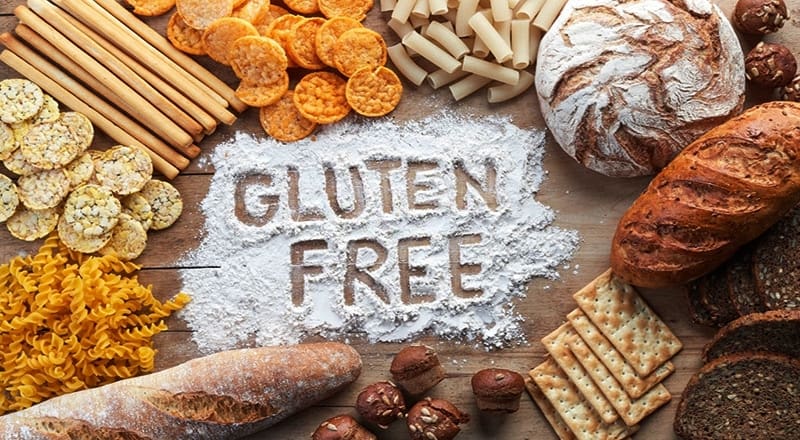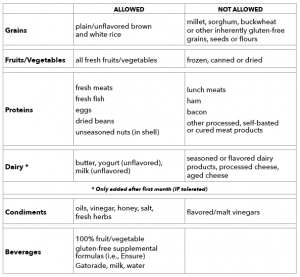A Serious Form of Celiac Disease is ‘Cured’ by Diet Alone

Why Do Symptoms Remain Despite a Strict Gluten-Free Diet?

The title of the study is ‘Trace gluten contamination may play a role in mucosal and clinical recovery in a subgroup of diet-adherent non-responsive celiac disease patients’. This study is a breakthrough in understanding why symptoms persist and healing remains unaccomplished despite a strict gluten-free diet.
We have known about the secondary effects of gluten for some time, but this study reveals an added step that must be addressed in these patients.
Could Refractory Celiac Disease Be Cured with Diet Alone?
The hypothesis of the researchers was that they wanted to address a problem known as non-responsive celiac disease (NRCD). In this condition, despite adhering to a gluten-free diet, patients continue to have symptoms and/or villous atrophy (damage to their small intestine consistent with classic celiac disease).
A subset of these patients has a more serious condition known as refractory celiac disease (RCD). RCD is treated with immunosuppressive drugs, a dangerous protocol that can result in life-threatening infections, or an increased risk of cancer due to the suppression of the immune system. Also, such drugs, weaken the very part of the body that needs strengthening in the face of celiac disease, the immune system.
I found this study particularly fascinating because it supported a theory I’ve had for quite some time. And that is that refractory and non-responsive celiac disease is likely truly quite rare but that many cases diagnosed with these conditions are likely suffering from the secondary effects of celiac disease or they were ingesting gluten somehow.
I came to this conclusion based on the vast number of patients we have seen here at Root Cause Medical's clinical nutrition department over many, many years. During all that time we have hardly ever run into a case diagnosed with NRCD or RCD that couldn’t be addressed successfully with our program. But, there was no research that I knew of that looked at this issue until now. It was the goal of the researchers to see if a diet that was truly gluten-free would allow patients who were previously classified with NRCD or RCD to be reclassified as healthy celiacs.
The patients, 17 in all, were put on a gluten contamination elimination diet (GCED) – I describe what this is below. The average age of the patient was 42 years (patients ranged from 6 – 73). All the patients had symptoms prior to the start of the diet and they were confirmed, through a dietary interview, to be strictly conforming to a gluten-free diet. They remained on the gluten contamination elimination diet for 3 to 6 months.
Study Showed an 82% Success Rate, 83% for Refractory Celiac
Of the 17 patients, 14 ‘responded’ to the diet, which was an 82% success rate. The definition of ‘responded’ was a strict one – it meant that the patient had no further symptoms and was no longer suffering from villous atrophy (if the test was performed). In other words, they were now ‘healthy’ celiacs.
At the beginning of the study, 6 patients were diagnosed and met the criteria for the serious condition of refractory celiac disease. After following the diet, 5 of these 6 patients were completely symptom-free and no longer met the criteria for refractory celiac disease.
So, out of the 6, only 1 did not respond. That means that only 17% of the initial 100% diagnosed with the disease, actually seemed to have it. It also means that 83% of those patients were needlessly being given immunosuppressive drugs. That’s a big deal!
What was also exciting was that 79% of the entire group evaluated was, after the 3 to 6 month period of following the diet, were able to return to their ‘regular’non-restricted gluten-free diet and maintain their lack of symptoms.
The researchers felt that the 3 to 6 month period was enough time to ‘heal’ the immune system such that its ability to tolerate some cross-contamination improved. I would like to add that evaluating these patients for the secondary effects of gluten, including infections, probiotic insufficiency, cross-reactive foods, toxins, nutritional deficiencies, and hormonal imbalance, would also be a good idea.
I’m curious how many of these patients may have regressed again after a passage of 9 plus months. This is a time frame that we find in our patients who have done well gluten-free but who have not been evaluated for the secondary effects.
A Gluten Contamination Elimination Diet was Used
What was the gluten contamination elimination diet exactly? It allowed brown and white rice as the only grains; fresh fruits and vegetables, no canned, frozen or dried; herbs; fresh meats, poultry, fish and eggs, nothing processed such as bacon, deli meat or sausage. Dairy products were eliminated for the first month and then reintroduced to see if they were tolerated. But only unflavored, unseasoned butter, milk, or yogurt, no cheeses were allowed.
Condiments consisted of oils and vinegar, excluding flavored and malt vinegar, honey, and salt. Allowed beverages were 100% fruit and/or vegetable juices, milk (after the first month if tolerated), water, and gluten-free supplemental formulas such as Boost and Ensure. All cereal grains aside from rice are prohibited.
32% of Grains, Seeds, and Flours Show Gluten Contamination
You may be wondering why all grains other than rice were excluded. Sadly, they found that testing of individual ingredient gluten-free grains, seeds, and flours yielded, 32% of the time, gluten levels above 20 ppm – the legal limit for gluten-free food to carry the label. They felt that cross-contamination was occurring at harvest, during milling, processing, or transport, but it was in fact occurring almost one-third of the time.
While most celiacs can safely tolerate, according to these researchers, about 10 mg of gluten cross-contamination daily (this translates into 500 grams of food containing 20 ppm of gluten), there is variability and many patients cannot tolerate even low gluten exposure. This is a strict diet, granted, but it is also a very healthy one. And, the good news is that the researchers discovered that in 79% of the patients, it didn’t need to be maintained beyond 3 to 6 months.
Eliminating processed foods is factually something that everyone could benefit from, regardless of their gluten-intolerant status. Eating foods in their fresh, unadulterated form, free of chemicals, preservatives and, as we now know, contamination with gluten is the type of diet that would benefit all Americans. Because the ‘Frankenfoods’ of today are loaded with overwhelming chemicals that thwart our body’s ability to detoxify and deal with inflammation.
Something we now understand as the initiator of most degenerative diseases. The table showing the allowed and disallowed foods are below. It is not exhaustive, in my opinion, as I can already hear patients asking about tea, coffee, sugar, and the like. Basically, the best way to interpret those questions is that if it’s not listed on the ‘allowed’ side, then it isn’t on this diet.
Here’s the Diet:
 Let’s Help Those Who are Suffering
Let’s Help Those Who are Suffering
I can guarantee that many of you reading this blog are suffering from this problem. And if it isn’t you, perhaps you know someone who seems ‘ultra-sensitive’ to gluten cross-contamination and is frequently bothered by the foods they’re eating. If you do know this person, please pass along this information. And certainly, if you know anyone who has been diagnosed with non-responsive celiac disease or refractory celiac disease, please share this with them.
Statistically, with this data, you could literally save the life of such a person. I hope you found this informative. I think this diet, in conjunction with a thorough evaluation of the secondary effects associated with gluten intolerance, should improve the health status of many.
Do you need help with your health?
We have the diagnostic and testing tools, the clinical experience, and a different medical approach to discovering the root cause of why you have the symptoms that are bothering you. As long as you are ready to make some dietary and lifestyle changes, we can help you. We will "hold your hand" through the changes, step by step, to make each step an easy one. We are located in Clearwater, FL, at 1000 S Ft Harrison, at the corner of Ft. Harrison Ave. and Magnolia St. There is plenty of parking space directly accessible from Ft Harrison. If it is not convenient for you to come to Root Cause Medical Clinic, we offer telehealth/telemedicine consultations to residents of certain states. Call us for details.
Contact us for a Consultation – Call 727-335-0400

Dr. Vikki Petersen DC. CCN
Founder of Root Cause Medical Clinic
Certified Functional Medicine Practitioner
Dr Vikki Petersen is a public speaker, author of two books, several eBooks and creates cutting edge content for her YouTube community. Dr Vikki is committed to bringing Root Cause Medicine and its unique approach to restoring health naturally to the world.
Ask a Doctor
Have a health concern you'd like to speak with a doctor about? Or just want clarity on a subject? Ask Us!

 Let’s Help Those Who are Suffering
Let’s Help Those Who are Suffering
